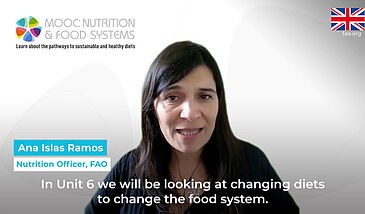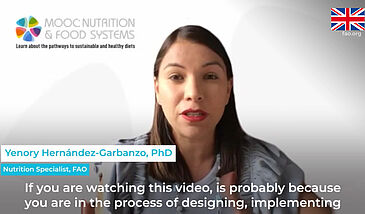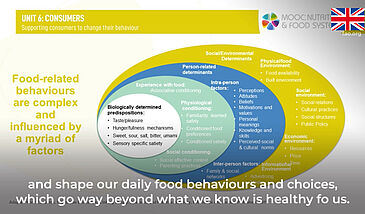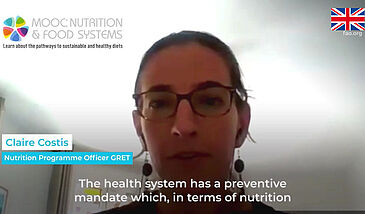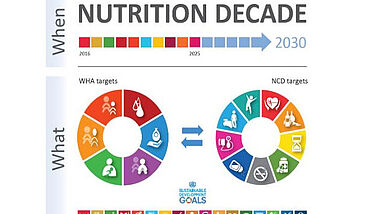En ligne depuis le 17/11/2022
0/5 (0)

Description
By now we have seen that to improve nutrition and avoid unintended consequences it is necessary to transform food systems (FS), by intervening at different levels and through different levers, and by looking at all its parts and at their interrelatedness so that they work towards sustainable healthy diets.
In this collection, we will focus on the three main components of the FS:
a) consumers/eaters,
b) food environments and
c) production and supply, seeing how they interact and influence each other. This unit discusses what influences consumer behavior and, conversely, how consumer behaviors can shape the food environment and influence food production and supply. The unit will also highlight the importance – and provide good examples – of policy, approaches and interventions that can address the consumer perspective including information, education and communication for developing life-long positive dietary habits.
We will look more closely at the food environment as well as the physical, economic, socio-cultural and policy conditions that shape it and influence access, affordability, food quality and safety, and consumer behaviours. The food environment is “where people meet the food system” (United Nations System Standing Committee on Nutrition, 2019) in simple words. FAO describes the food environment as “the physical, economic, political and socio-cultural context in which each consumer engages with the agri-food system to acquire, prepare and consume food”. Food environments typically interact with and connect food supply chains and consumer behaviours. This unit will also look at different types of food environments as well as drivers for change towards sustainable healthy diets.
État
- Labellisé
Langues
- Anglais
- Langues étrangères
Licence Creative Commons
- Partage des conditions à l'identique
- Pas d'utilisation commerciale
- Pas de modification
Nature pédagogique
- Entretiens et témoignages
- Présentation
Niveau
- Bac+2
Objectifs de Développement Durable
- 2. Faim "Zéro"
Thèmes
- Alimentation
Types
- Vidéo (+ de 10 min)
Mots-clés
Liste de ressources
Contributeurs
Islas Ramos Ana
Responsable nutrition , FAO
Hernandez Garbanzo Yenory
Nutrition Specialist at FAO and Vice-president of the Society of Nutrition Education and Behaviour
Vargas Melissa
Expert on nutrition guidelines and standards/project coordinator , FAO
Bayili Adama
Coordinator au GRET
Costis Claire
Nutrition Programme officer au GRET
Mattioni Dalia
chercheuse associée - projet FOODTRAILS - École de géographie et de planification, Université de Cardiff
Rodríguez Osiac Lorena
Professor, Public Health Institute, University of Chile


